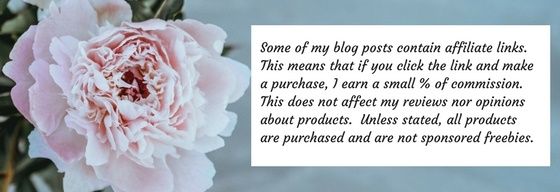How To Naturalise Your Beauty Routine For Spring
Posted on
Spring is an important seasonal shift when it comes to beauty. It is when we look at swapping out our heavy skincare routine that we have been hiding under all winter for something lighter and fresher.
It is also a really good opportunity to look at your skincare and beauty routine and see where you can make some big changes in terms of swapping commercially produced products for more natural and even some homemade products.
Let’s take a look at how you can naturalise your beauty routine for the spring. Your skin, your purse, and the environment will thank you for it!
Coconut oil
In recent years coconut has experienced somewhat of a renaissance, with people using it for all sorts of things, cooking being just one of them.
Coconut oil can work wonders for both your hair and skin. Suffering from dry, damaged hair, maybe from using hair dyes, pollution, and heated tools? Pop some coconut oil on it. Coat the ends in it and leave it for an hour two, or even overnight if you can before washing out as normal. A study published in the Journal of Cosmetic Science found that coconut oil was the only oil that reduced protein loss when used as a pre-wash or post-wash product. This held true for both damaged and undamaged hair. Due to its low molecular weight, it is able to penetrate the hair shaft and prevent hair damage.
It is also a great moisturiser for dry skin and conditions such as eczema or psoriasis. Pure cold-pressed, organic, non-GMO coconut oil is an excellent massage oil that can be used for all types of skin, including dry skin.
DIY Face Masks
Get rid of all those pots and tubs of face masks that have no doubt gone out of date since you last used them, and head down to your fridge and kitchen pantry instead. You do not need to spend a fortune on commercially produced face masks that come packaged in plastic containers - it is really easy to make your own with simple store cupboard and fridge ingredients. Even better, you can tailor them exactly to your skin type and skin problems. There are plenty of beauty mask recipes online, so find one that suits your skin and have a go at making your own.
One thing that is important to remember when making your own face masks, or indeed any other homemade beauty product is that it does not always turn out pretty. Sure, you see all these lovely looking ones on social media, but the reality is that they quite often look a little grey in color, a little sludgy and your bathroom sink ends up covered. However, when you see the difference that it can make to your skin - and your bank account - you suddenly won’t be quite as bothered!
Cleansers
Cleansing is a vital part of a skincare routine. Whether you wear a full face of makeup every day or prefer to go au naturel, cleansing is one of the things you should not even consider skipping. It removes not just makeup, but the grime that attaches itself to your skin all through the day. It is also really easy to naturalize as well.
You can make a really simple and effective cleanser using honey, aloe, and oil. You don’t need to use this in the morning; just in the evening. Massage the mixture of ingredients onto a damp face and then use a soft, wet face cloth to remove the product. The product will loosen all the grime and dirt and makeup, and the use of the cloth will remove it all.
Toner
A toner helps to calm, hydrate, balance the pH of the skin and regulates oil production. , There are a couple of different ways to apply a toner. You can either spritz it onto the skin and use your fingers to gently ‘press’ it into the skin or apply using a cotton pad.
Apple cider vinegar makes for an excellent natural toner for oily or congested skin. The downside is that it does not smell particularly lovely and it does stick around for a while, particularly if you sweat. However, it is a great product for balancing the skin and feels refreshing too. Make sure that you do dilute the apple cider vinegar with water before applying it to the skin.
Cool it down
We know how lovely it is to jump into a scalding hot shower or deep hot bubble bath after a long day at work. It’s comforting, it is relaxing and it feels SO good. However, as good as it feels, it really is not great for our skin, our energy bills, or the planet!
Hot water strips your skin of natural oils, which are needed to lock in moisture and lead to dry itchy skin, as well as drying out your hair and making it brittle.
In an ideal world, your shower should be five minutes long to get the best out of it for your skin. The first three minutes of your shower should be warm - not hot - and the last two should be as cold as you can tolerate. This has the following benefits:
-
It improves your circulation: Warmer water causes the blood vessels just under the skin to dilate, and the cold water restricts them. Switching between warm and cold improves circulation and helps to bring oxygen to the skin, leading to a healthy glow and complexion.
-
The warm water opens up your pores, allowing dirt and grime to escape, and then the cold blast afterward closes them back up, stopping any further dirt to clog them up and lead to spots and pimples.
-
It makes your hair look shiny and healthy. The cold water will close up the hair follicles and lie them flat, making them look glossy and full of life. It also helps to strengthen your hair.
It doesn’t take a lot of effort or money to naturalise your beauty routine. In fact, it can even save time and money. Why don’t you try naturalising just one step of your beauty routine this spring and see the difference it can make?
Until next time
Zoe
x

